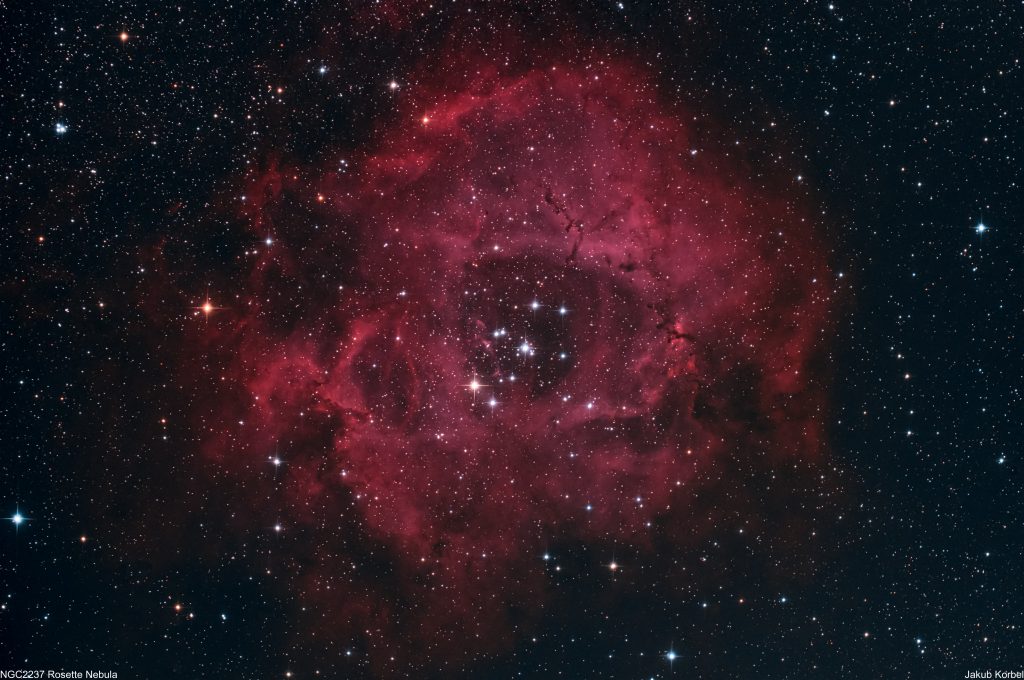Rosette Nebula is a giant cloud of hydrogen gas. The gas is ionized by the star cluster located in the middle and therefore emits the light. Circular shape and the color correspond to the name – the rose. The cluster in the middle can be observed even by using small telescope, but the nebulosity is very dim, therefore in order to see it, one would need perfectly dark sky and very large telescope with low magnification. It’s definitely easier to photograph the nebulosity. My previous photo was done through the narrow band filters, which suppress the light pollution and increases the contrast of the picture. Now I tried it with normal one shot color camera and I must conclude that it went quite well.

Technical details:
| Telescope | Newton 150/600 mm |
| Aperture | 150 mm |
| Focal length | 630 mm |
| Mount | Avalon M-Zero |
| Autoguiding | ZWO 174MM, Guidescope 30 mm |
| Camera | ZWO 071 Pro @-10°C |
| Corrector | Explore Scientific HR |
| Filters | Astronomik L-1 - UV IR Block Filter |
| Exposure | 16x300s, Gain 94, bin 1x1, |
| Date | 2019-03-30 |

[…] 6Da with WO RedCat was the NGC 2237 Rosette Nebula (a short description can be found in my previous post). The field of view of this telescope, combined with a full-frame sensor of 6Da is huge. The […]